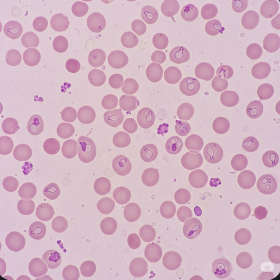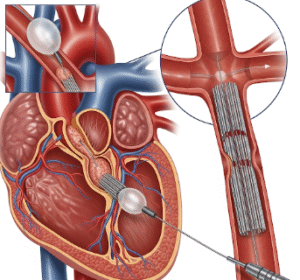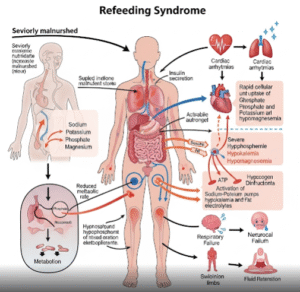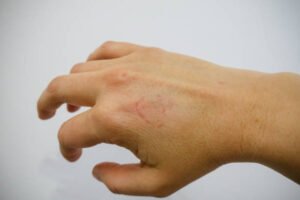Overview
Babesiosis is a rare but potentially serious parasitic infection caused by microscopic organisms belonging to the genus Babesia. These parasites infect and destroy red blood cells, leading to symptoms ranging from mild flu-like illness to life-threatening complications, particularly in people with weakened immune systems or other underlying health conditions. While babesiosis is more common in certain parts of the world, including the northeastern and upper midwestern United States, cases have also been reported in Asia, including Korea, primarily in individuals exposed to ticks or those who have received contaminated blood transfusions. In Korea, advanced diagnostic technology, specialized infectious disease units, and a strong public health system make early detection and treatment of babesiosis possible. Although the infection is uncommon, Korean healthcare providers are well-equipped to manage it due to their experience with other tick-borne diseases and advanced hospital facilities.
What is Babesiosis?
Babesiosis is an infection caused by Babesia parasites, most commonly Babesia microti in the United States and Babesia divergens or Babesia venatorum in Europe and parts of Asia. In Korea, Babesia microti-like organisms have been detected in rare cases. The parasite is primarily transmitted through the bite of infected Ixodes ticks, which are the same species that spread Lyme disease. Once inside the body, the parasites enter red blood cells, where they multiply and cause the cells to rupture. This destruction leads to anemia and other systemic effects. In some cases, babesiosis can be asymptomatic, particularly in healthy individuals, but in others—especially in the elderly, immunocompromised, or those without a spleen—it can be severe and even fatal.
Symptoms
Symptoms of babesiosis may appear within one to four weeks after infection, though some cases remain symptom-free. Common symptoms include:
- Fever and chills – often the first sign of infection
- Fatigue and weakness – due to destruction of red blood cells
- Sweating – particularly night sweats
- Headache – often accompanied by body aches
- Loss of appetite – leading to unintended weight loss
- Dark urine – caused by hemolysis (breakdown of red blood cells)
- Enlarged spleen or liver – detected during medical examination
Severe cases may lead to:
- Low blood pressure
- Jaundice (yellowing of the skin and eyes)
- Organ failure (especially kidney or liver)
- Acute respiratory distress syndrome (ARDS)
Causes
Babesiosis is primarily caused by:
- Tick Bites – The main cause is a bite from an infected Ixodes tick. These ticks typically become infected after feeding on animals like deer or rodents that harbor the parasite.
- Blood Transfusion – Rarely, babesiosis can be transmitted through transfusion of contaminated blood.
- Congenital Transmission – Though extremely rare, the infection can be passed from mother to child during pregnancy.
In Korea, human babesiosis cases are often linked to travel history to endemic regions or imported infections, though the local tick population is capable of carrying similar parasites.
Risk Factors
Some people are more susceptible to babesiosis or more likely to develop severe illness, including:
- Older adults – especially over the age of 50
- People without a spleen – the spleen helps remove infected red blood cells
- Individuals with weakened immune systems – due to cancer, HIV/AIDS, or organ transplantation
- People with chronic illnesses – such as liver disease or kidney disease
- Frequent exposure to tick habitats – such as forested or grassy areas
- Recipients of blood transfusions – especially from donors in endemic regions
Complications
If untreated or in high-risk individuals, babesiosis can lead to serious and life-threatening complications, including:
- Severe anemia – due to rapid destruction of red blood cells
- Heart problems – including heart failure or arrhythmias
- Kidney failure – from breakdown of blood cells and toxins
- Liver dysfunction – leading to jaundice and other issues
- ARDS – caused by inflammation and fluid build-up in the lungs
- Death – particularly in elderly or immunocompromised patients
Prevention
While babesiosis is rare in Korea, preventive measures are essential, especially for those traveling to or living in endemic areas. Key preventive steps include:
- Avoiding tick-infested areas during peak seasons (spring to early autumn)
- Wearing protective clothing – long sleeves, long pants tucked into socks, and light-colored clothing to spot ticks easily
- Using insect repellents – especially those containing DEET or permethrin
- Performing regular tick checks after spending time outdoors
- Prompt tick removal – using fine-tipped tweezers to grasp the tick close to the skin and pull steadily upward
- Screening blood donors – in countries like Korea, strict blood safety measures reduce the risk of transfusion-related babesiosis
Treatment Options in Korea
In Korea, babesiosis is treated in specialized infectious disease departments of major hospitals, often under the guidance of doctors experienced in managing rare parasitic infections. Treatment strategies depend on the severity of the disease and the patient’s overall health status.
1. Diagnosis
Diagnosis involves:
- Blood smear microscopy – to visualize parasites inside red blood cells
- Polymerase Chain Reaction (PCR) – to detect Babesia DNA
- Serological tests – to identify antibodies against the parasite
2. Medical Treatments
For mild to moderate babesiosis, the standard treatment includes a combination of:
- Atovaquone and Azithromycin – preferred for most patients due to fewer side effects
- Clindamycin and Quinine – used for severe cases but may cause more side effects
3. Severe Cases & Supportive Care
In severe babesiosis, especially with high parasitemia (large number of infected red blood cells), additional measures may include:
- Exchange transfusion – replacing infected blood with uninfected donor blood
- Hospitalization – for close monitoring and intravenous medication
- Supportive care – oxygen therapy, intravenous fluids, and organ support as needed
4. Rehabilitation and Support
Recovery may take several weeks, and patients may experience lingering fatigue. Korean hospitals often provide follow-up appointments, blood tests, and nutritional guidance to help restore energy and blood health.
5. Public Health Measures in Korea
The Korea Disease Control and Prevention Agency (KDCA) monitors and reports cases of tick-borne diseases, ensuring quick identification and response to any suspected babesiosis cases. Educational campaigns on tick prevention are also carried out during peak seasons.













